Climate-positive products that build the future
Wood is a versatile material and the only renewable construction material. It is also one of the strongest materials in relation to its weight, making it particularly suitable for construction. Wooden structures are usually characterised by a combination of properties that together deliver the best possible load-bearing capacity, thermal, acoustic and moisture insulation, fire resistance and a long lifetime.
Increasing the proportion of wood in construction can facilitate a reduction in the use of construction materials that are not derived from renewable raw materials. Wood-based products and their manufacture generate smaller amounts of greenhouse gases than alternative materials used to achieve the same function.
The EU’s long-term plan for a competitive economy that is climate neutral by 2050 is called the Roadmap 2050 and it sets out a long-term strategic vision for cutting greenhouse gas emissions. The European Commission’s vision describes seven main strategic building blocks, a major one of which is fully exploiting the benefits of a bioeconomy and creating vital carbon sinks. Other key elements of the strategy are greater energy efficiency, including zero-emission buildings, plus a transition to renewable energy sources.
In this context, the construction sector has huge opportunities over the short and long term to reduce emissions of carbon dioxide through the choice of materials and designs with a low environmental impact. Greater use of wood products in buildings and infrastructure projects is part of the solution, since it helps with the creation of temporary carbon sinks. The lower climate impact that occurs when society makes use of long-lived products in wood, for example in a building, is noted in international climate reporting using the term Harvested Wood Products (HWP).
Production of different construction materials
Over the past two decades, Europe has seen rapid advances in the use of wood for construction purposes, largely as a result of the EU’s Construction Products Directive, which was incorporated into the building regulations of member states in 1994. It has since been replaced by the Construction Products Regulation (CPR), which has the same purpose as its predecessor.
The transition to function-based provisions made it possible to also build larger buildings using wood-based systems. The intention of the regulation was to promote technical development and more cost-effective construction by permitting various solutions to achieve a specified function. The function-based approach also replaced the ban on flammable materials, thus making it possible to build tall buildings in wood.
Manufacturing wood products requires the input of very little external energy, over and above the energy from the production line’s own by-products, such as bark and wood chips. The sawmill industry’s main energy use relates to the drying of wood, which accounts for around 80 percent of all energy consumption. Electricity for the sawing equipment consumes about 10–15 percent of the total energy used, and the rest goes on lighting and heating buildings. Of the energy for the drying kilns, 80 percent is thermal energy and the rest is electricity to run the fans. The majority of the sawmills produce thermal energy on site, in their own boiler or a boiler owned, for example, by an energy company.
When manufacturing other construction materials, the starting point is finite raw materials. Both extraction and processing require energy, often in very large quantities and from fossil fuels. The production of cement and steel generates considerable emissions of carbon dioxide. In addition, cement production releases stored carbon dioxide from the limestone that is used as the raw material. All the construction materials produced by these processes therefore have a higher carbon footprint.
The Swedish government intends to introduce a requirement that, from 1 January 2022, the developer must draw up and submit a climate declaration once a new building is completed.
The climate declaration is to be based on a life cycle assessment (LCA) and on the methodological instructions developed by the European Committee for Standardization (CEN), under a mandate linked to the Construction Product Regulation (CPR). Construction products covered by CE marking may, in the future, be required to include an Environmental Product Declaration in the performance declaration that is part of the criteria for CE marking, the product labelling scheme for the European Union’s internal market. The life cycle assessment method used for Environmental Product Declarations of construction products is compatible with the method that applies for all building works and can therefore be used to draw up environmental or climate declarations for houses or infrastructure projects.
LCA calculations following CEN’s methodology give a measure of a product or activity’s emissions of carbon dioxide and other greenhouse gases, helping the user to opt for the alternative with the lowest impact on the climate. The LCA calculations acknowledge that carbon storage in wood makes a wood-based product carbon negative. This is because carbon dioxide is stored in the original wood and the emissions associated with harvesting, transport and processing are small compared with the quantity of stored carbon. The same amount of biogenic carbon will then be released in the final phase of the life cycle. As a result, overall emissions using CEN’s LCA methodology will always be zero when the whole life cycle is taken into account, with no consideration given to the positive climate effects of the carbon in the wood that is stored in buildings over a prolonged period. To have this included, such data needs to be added to the LCA calculations. One way to do this is to follow the same methods used in international climate reporting.
Wood replaces other construction materials and reduces carbon emissions
Wood can replace other construction materials in many structures while providing the same functionality. Such a material substitution could bring significant climate benefits, where wood replaces materials whose production requires fossil fuels and causes high carbon emissions. A study has shown that where wood products replace other construction materials in buildings, there is an estimated average substitution factor of 2.0 tonnes carbon dioxide per cubic metre (m3) of wood material, which in an industrially produced apartment with a lightweight wood frame adds up to around 20 tonnes of carbon dioxide. The production phase, and thus the choice of material, is taking on increasing significance, and in this context substitution is vital.
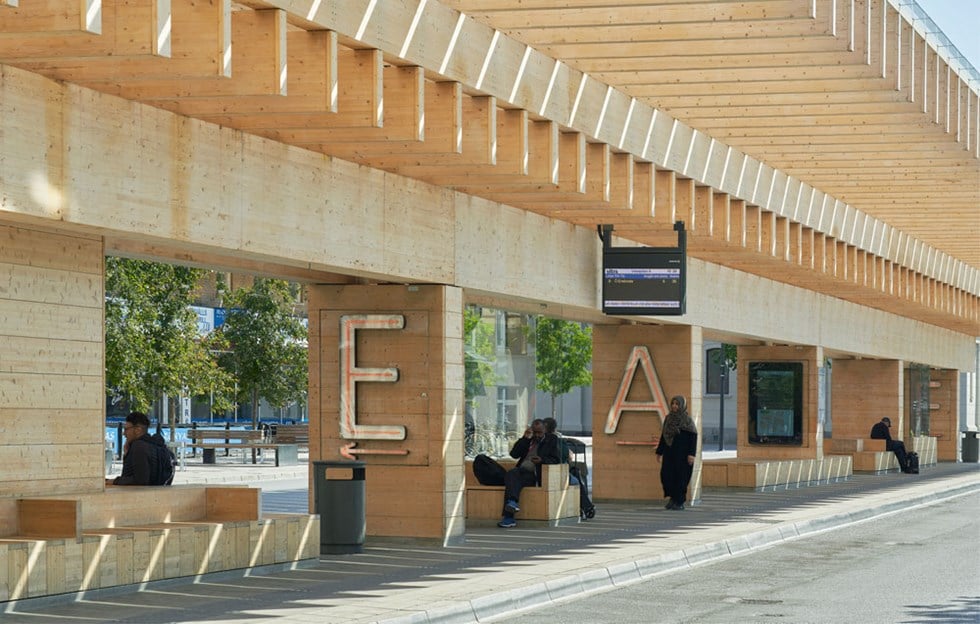 Vasaplan, Umeå.
Vasaplan, Umeå.
Environmentally efficient life cycle and ecocycle of wood products
There are three ecocycles for wood – one where the product or component is reused, one where heat or energy is recovered from the product, and one that recycles the component parts of the wood material via nature’s own ecocycle.
We see examples of the shorter ecocycle in the construction industry and in distribution and packaging. Windows, doors and timber can be reused, as can pallets, packaging and cable drums. In all cases, there is an organisation to deal with the products and find new users.
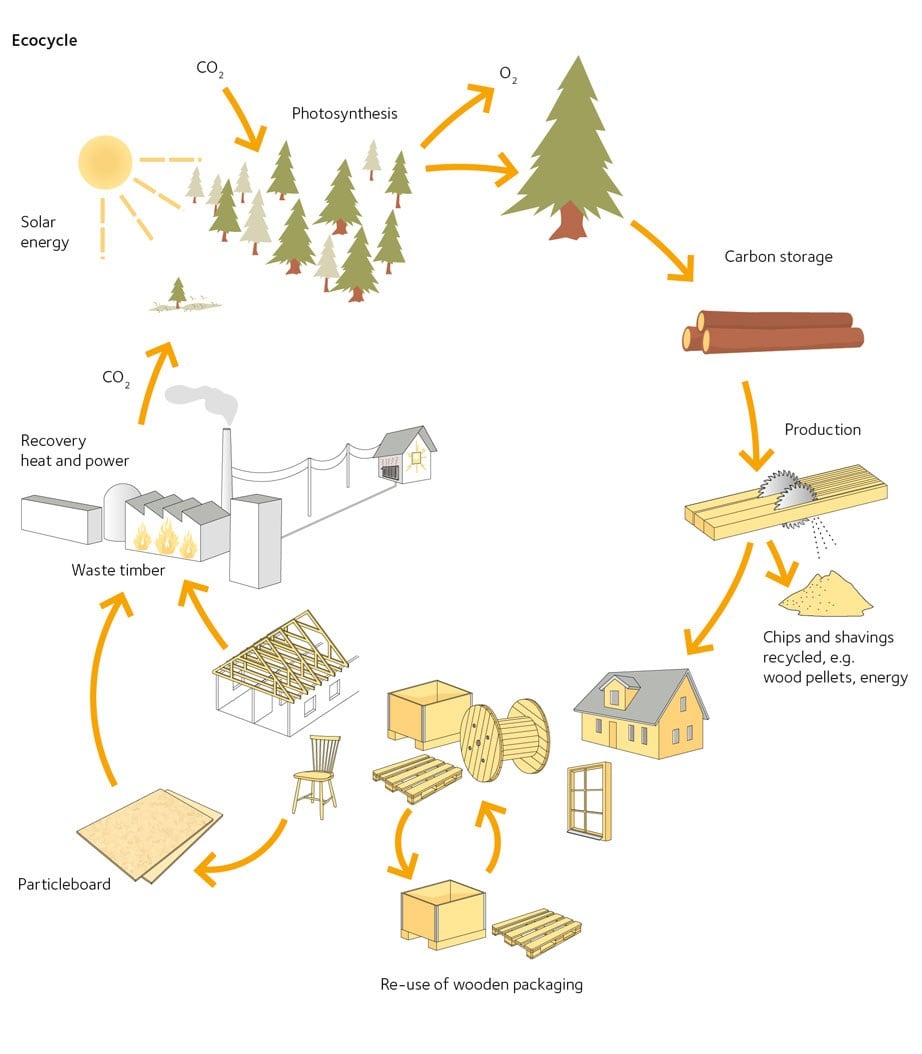
Fig. 12 Ecocycle of wood products The ecocycle comprises two parts. One relates to the forest and the other to the products. The forest gains its vitality from the sun. Through photosynthesis, solar energy is absorbed and reacts with carbon dioxide (CO2) to produce nutrients for the growing trees. The forest’s products contain carbon (C) that has been absorbed by the trees in the form of carbon dioxide. The ecocycle of the products includes reuse, repair and recycling. When these products reach the end of their life, the carbon dioxide is released into the atmosphere as the waste decays or is recycled as bioenergy. The carbon dioxide is then again captured by the trees and converted into nutrients and new building blocks for their growth.
Once a wood product can no longer be reused or its material recovered for use in fibreboard and other sheet materials, for example, it still constitutes a valuable and climate-neutral energy source. This energy is carbon neutral and is in fact stored solar energy.
To make optimum use of wood in climate terms this should be carried out in a particular order that is illustrated by the environmental hierarchy for wood (see fig. 13). When choosing between different usage options, the alternative that gives the longest period of use should always be chosen, i.e. the one that is higher up the environmental hierarchy. Directly using felled forest for energy production is thus not optimal if there are other alternatives. Only the by-products that cannot be turned into products should be used as fuel, replacing energy from finite fossil fuels. It is important to note that wood never needs to be sent to landfill.
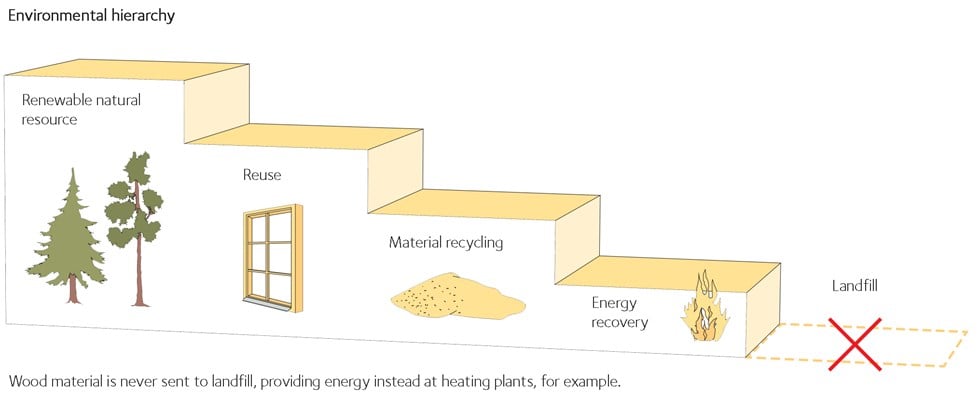
Fig. 13 Environmental hierarchy Wood material need never be sent to landfill, instead providing energy at heating plants, for example.



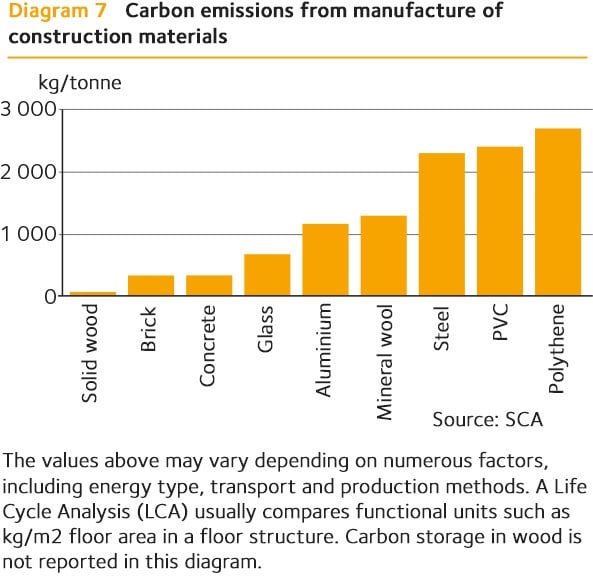
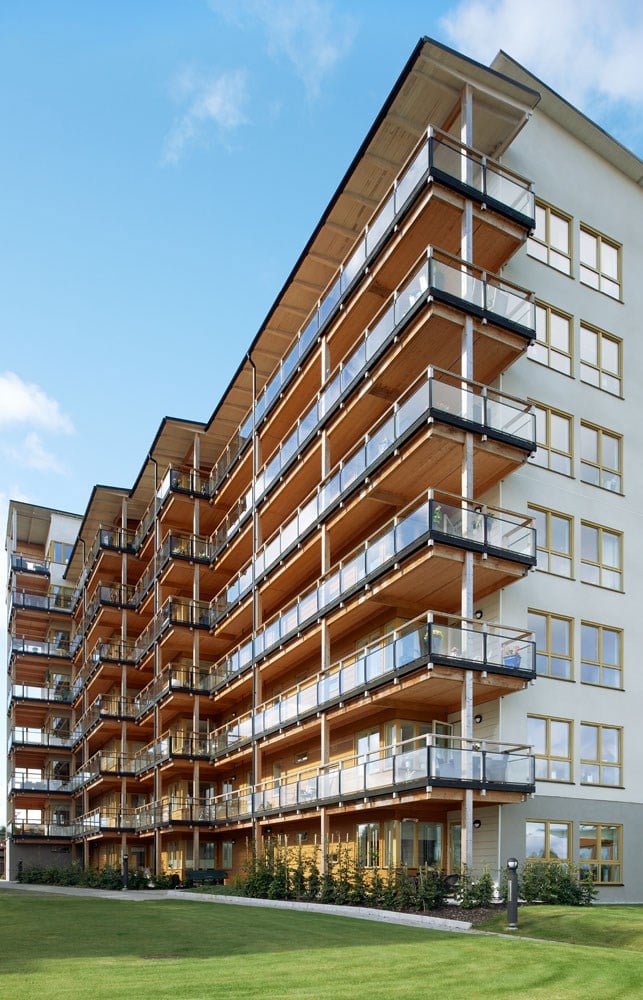 Limnologen, Växjö.
Limnologen, Växjö.